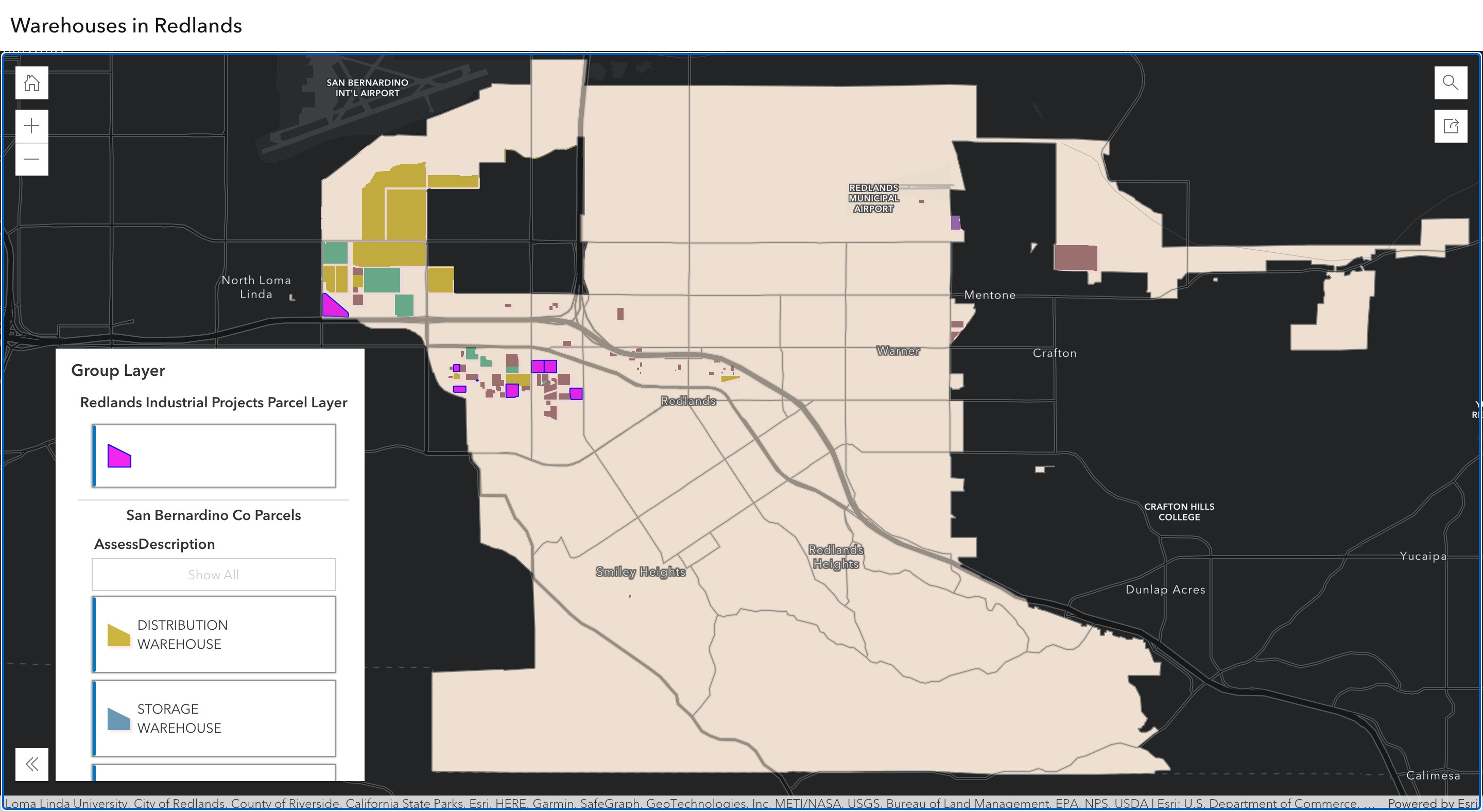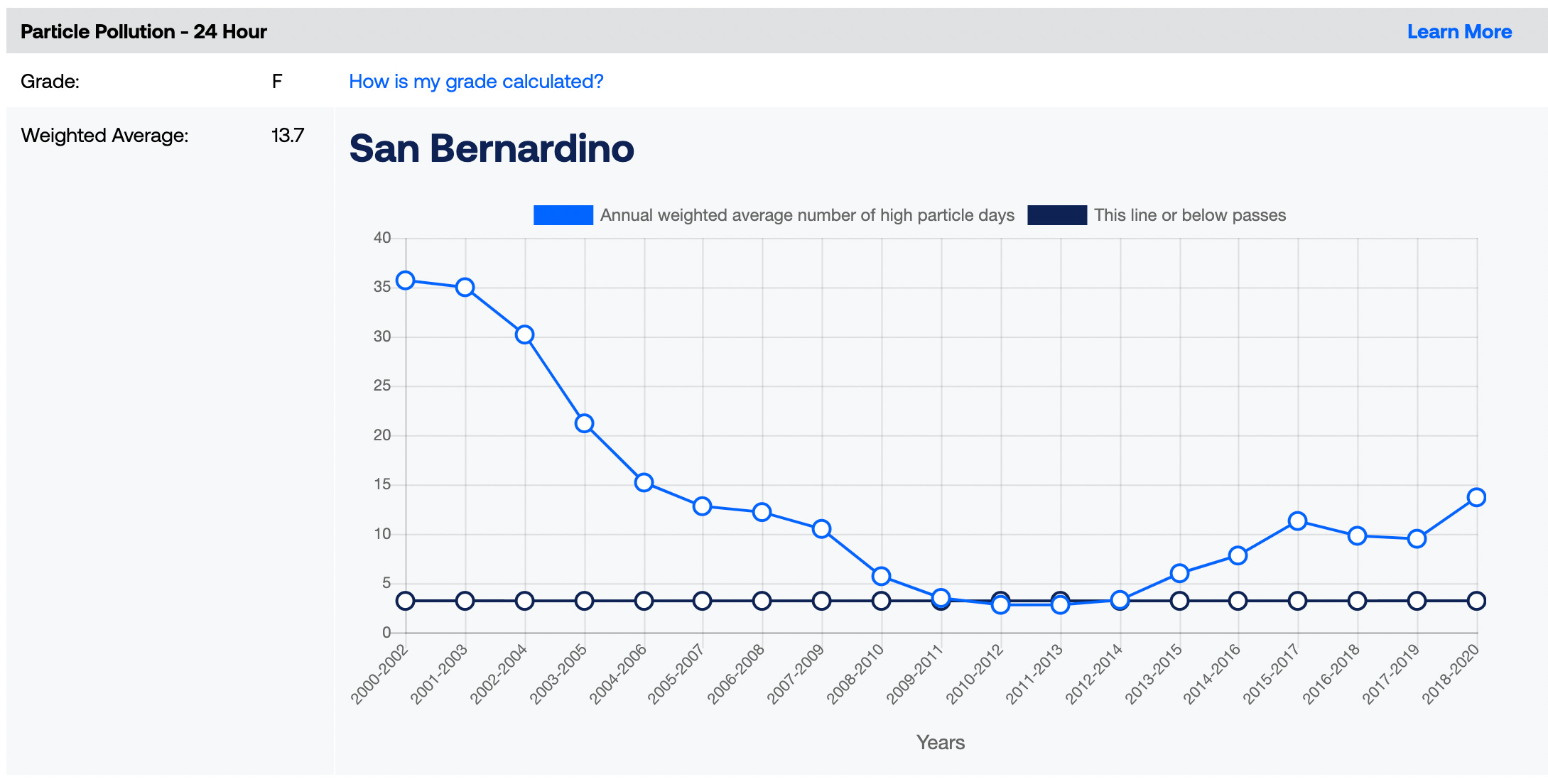Warehouse development rules go before City Council
Plus a statewide coalition calls on Governor Newsom to halt Inland Empire warehouse development

Plus a statewide coalition calls on Governor Newsom to halt Inland Empire warehouse development
2/21 MEETING UPDATE: City Council is considering a ban on new warehouse developments in Redlands.
After hearing from city staff and the public about proposed warehouse development standards, City Council took the discussion a step further to consider the possibility of no longer permitting new warehouse developments.
Council members cited concerns over declining air quality and the impact distribution warehouses have on neighborhoods in and around Redlands.
The amount of land zoned for warehousing is already in short supply. While the proposed ordinance would limit development in North East Redlands, council members were concerned over the possibility of new warehouses going up on the west side of town.
City Council voted unanimously to continue the discussion of the warehouse ordinance and directed staff to look into making warehousing no longer permitted in the City of Redlands.
REDLANDS, CA - A new city ordinance regulating warehouse development in Redlands will be considered by City Council on Tuesday, Feb 21.
The ordinance would apply to all new warehouse development projects in Redlands. Here are the highlights:
- Location Requirements: New warehouses 50,000 sq ft or larger must be within one mile from a freeway ramp.
- Screening Sensitive Nearby Properties: Warehouse projects that abut neighborhoods, childcare centers, hospitals, or other properties with a “sensitive receptor,” require a ten-foot-high screen wall and extra landscaping. Truck docks and entries must be oriented away from these properties, and parking lots need to provide at least 35% shade cover.
- Traffic Patterns and Truck Routes: Warehouse applicants must submit a Truck Routing Plan to show how large trucks will travel to the freeway without going through residential zones or districts. (View the city truck route map here). Other requirements include a traffic impact assessment and prohibiting on-street parking of trucks or cabs in residential areas.
- Sustainable Energy: To limit truck idling, warehouse projects must include electric plug-in devices at all dock doors for refrigerated trailers. Other sustainable energy requirements include installing solar panels on the rooftop, cool roof treatments, Level 2 quick charge stations in the parking lot, and using zero-emissions on-site operational equipment.
- Other construction standards: Projects must construct an extra large electrical equipment room in preparation for expanding the use of electrical equipment, such as EV Trucks. Other requirements include cool surface treatments on driveways and parking areas, encouraging the use of solar panels on parking shade structures, and prohibiting outdoor storage higher than the perimeter screen wall shielding sensitive properties.
After reviewing the ordinance, the Redlands Planning Commission added a requirement for a conditional use permit (CUP). This means projects in areas zoned for warehouses will have higher scrutiny when considering the land use around the proposed development, such as a school or neighborhood.
If approved by City Council, this ordinance will apply to warehouse developments currently in the application process.
Here’s a list of the current warehouse developments in Redlands. The map also shows current warehouses by type in Redlands. Click on the map to interact.

Redlands City Council will consider the ordinance at its regular meeting at 6pm on Tuesday, Feb 21 at City Hall or via Zoom. You can make public comments in person or online.
Follow this link for the agenda.
A Region Grown Weary of Warehousing
In January, a coalition of more than 60 environmental, labor, community, and academic groups wrote a letter to Governor Newsome calling for a full stop to warehouse development for the next 1 to 2 years in the Inland Empire.
The letter explains how warehouse development has been uniquely damaging to the Inland Empire, “The distinctive bowl shape of Inland geographies, combined with the Inland Empire’s role as a global logistics hub, has led to increased rates of cardiac, respiratory, and reproductive health impacts, as well as cancers, related to truck emissions.”
According to the American Lung Association, the San Bernardino area has some of the worst air quality in the United States with a failing grade for both ozone and particle pollution. According to their data, after years of improvement, the air quality in the region has worsened since 2015.

The greatest pollution burden is felt by the communities closest to the warehouse developments. Here are some unsettling statistics outlined in the report:
- Unhealthy air quality days in SB County rose from 14.8% in 2019 to 19.7% in 2020.
- Some census tracts within SB County have close to a 20% asthma rate; in Riverside County, some census tracts have over a 15% asthma rate.
- Diesel exhaust is responsible for about 70 percent of the total cancer risk from air pollution; This risk is 95% higher near the Ontario warehouse development than the rest of the inland basin.
- The risk for asthma and heart attack goes up ten percentage points in neighborhoods within a 1/2 mile of warehouse facilities.
- In 2010, 337,445 Inland Empire residents lived within ¼ mile of a warehouse; by 2022 this number grew by 30,000 to 367,584 individuals, roughly 60% of whom are Latino.
The letter calls on Newsom to declare a Public Health State of Emergency in the Inland Empire so that communities can have time to develop policy plans to regulate warehouse development.
That’s what Redlands did in June 2022 when the City Council voted to temporarily stop warehouse development in the city.
The 135-day warehouse development moratorium gave the city time to create the ordinance that is going before City Council on Tuesday.
Other cities in the Inland Empire including Fontana, Chino, Colton, Pomona, and Norco have all passed moratoriums on warehouse development to study the impacts on traffic and the environment. San Bernardino City Council attempted to pass a moratorium in June 2022 but was one vote shy.
We went in-depth into the warehouse development in Redlands last October to look at the impact that the rise in distribution warehouses is having on Redlands and the region.
You can read more here: Redlands Responds to Regional Warehouse Boom.






